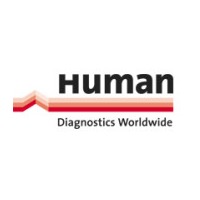Oligonucleotide Treatment Reduces Neurological Damage in Alzheimer's Model
|
By LabMedica International staff writers Posted on 18 Dec 2017 |

Image: Clumps of toxic Alzheimer\'s A beta protein (white spots) are scarcer in the brains of mice treated with an antisense oligonucleotide that targets APOE4 (top) as compared with those given a placebo (bottom) (Photo courtesy of Tien-Phat Huynh, Washington University School of Medicine).
Neurological damage in mice that had been genetically engineered to express human apolipoprotein E4 (APOE4) - a gene linked to increased risk of developing Alzheimer's disease - was significantly reduced by treatment with an antisense oligonucleotide.
The apolipoprotein E gene is the strongest genetic risk factor for late-onset Alzheimer's disease. Previous studies suggested that reduction of apoE protein levels through genetic manipulation could reduce the pathology of the disease's Abeta plaques. However, it was not demonstrated how reduction of apoE levels after birth would affect amyloid deposition.
To study the mechanism of apoE toxicity, investigators at Washington University School of Medicine (St. Louis, MO, USA) utilized an antisense oligonucleotide (ASO) to reduce apoE expression in the brains of APP/PS1-21 mice homozygous for the human APOE-epsilon4 or APOE-epsilon3 allele. The ASO or a suitable control material was injected into the brains of mice that were either newly born or of six weeks of age.
The investigators reported in the December 6, 2017, online edition of the journal Neuron that ASO treatment starting after birth led to a significant decrease in Abeta pathology when assessed at four months. In contrast, ASO treatment starting at six weeks - at the onset of amyloid deposition - led to an increase in Abeta plaque size and a reduction in plaque-associated neuron damage with no change in overall plaque load.
"Scientists have been interested in APOE for years but there are only a few examples where researchers have targeted it with a compound in living animals," said senior author Dr. David Holtzman, professor of neurology at Washington University School of Medicine. "Our findings indicate that APOE is not just involved in Alzheimer's risk and disease progression, but it could potentially be a real target for treatment or prevention."
"If you wanted to target APOE to affect the amyloid process, the best thing would be to start before the plaques form," said Dr. Holtzman. "But even if you start later, you still may reduce the amount of damage caused by the plaques. Now that we have shown that it is possible to target APOE, we can start figuring out the best way to do it."
Related Links:
Washington University School of Medicine
The apolipoprotein E gene is the strongest genetic risk factor for late-onset Alzheimer's disease. Previous studies suggested that reduction of apoE protein levels through genetic manipulation could reduce the pathology of the disease's Abeta plaques. However, it was not demonstrated how reduction of apoE levels after birth would affect amyloid deposition.
To study the mechanism of apoE toxicity, investigators at Washington University School of Medicine (St. Louis, MO, USA) utilized an antisense oligonucleotide (ASO) to reduce apoE expression in the brains of APP/PS1-21 mice homozygous for the human APOE-epsilon4 or APOE-epsilon3 allele. The ASO or a suitable control material was injected into the brains of mice that were either newly born or of six weeks of age.
The investigators reported in the December 6, 2017, online edition of the journal Neuron that ASO treatment starting after birth led to a significant decrease in Abeta pathology when assessed at four months. In contrast, ASO treatment starting at six weeks - at the onset of amyloid deposition - led to an increase in Abeta plaque size and a reduction in plaque-associated neuron damage with no change in overall plaque load.
"Scientists have been interested in APOE for years but there are only a few examples where researchers have targeted it with a compound in living animals," said senior author Dr. David Holtzman, professor of neurology at Washington University School of Medicine. "Our findings indicate that APOE is not just involved in Alzheimer's risk and disease progression, but it could potentially be a real target for treatment or prevention."
"If you wanted to target APOE to affect the amyloid process, the best thing would be to start before the plaques form," said Dr. Holtzman. "But even if you start later, you still may reduce the amount of damage caused by the plaques. Now that we have shown that it is possible to target APOE, we can start figuring out the best way to do it."
Related Links:
Washington University School of Medicine
Latest BioResearch News
- Genome Analysis Predicts Likelihood of Neurodisability in Oxygen-Deprived Newborns
- Gene Panel Predicts Disease Progession for Patients with B-cell Lymphoma
- New Method Simplifies Preparation of Tumor Genomic DNA Libraries
- New Tool Developed for Diagnosis of Chronic HBV Infection
- Panel of Genetic Loci Accurately Predicts Risk of Developing Gout
- Disrupted TGFB Signaling Linked to Increased Cancer-Related Bacteria
- Gene Fusion Protein Proposed as Prostate Cancer Biomarker
- NIV Test to Diagnose and Monitor Vascular Complications in Diabetes
- Semen Exosome MicroRNA Proves Biomarker for Prostate Cancer
- Genetic Loci Link Plasma Lipid Levels to CVD Risk
- Newly Identified Gene Network Aids in Early Diagnosis of Autism Spectrum Disorder
- Link Confirmed between Living in Poverty and Developing Diseases
- Genomic Study Identifies Kidney Disease Loci in Type I Diabetes Patients
- Liquid Biopsy More Effective for Analyzing Tumor Drug Resistance Mutations
- New Liquid Biopsy Assay Reveals Host-Pathogen Interactions
- Method Developed for Enriching Trophoblast Population in Samples
Channels
Clinical Chemistry
view channel
First Comprehensive Syphilis Test to Definitively Diagnose Active Infection In 10 Minutes
In the United States, syphilis cases have surged by nearly 80% from 2018 to 2023, with 209,253 cases recorded in the most recent year of data. Syphilis, which can be transmitted sexually or from mother... Read more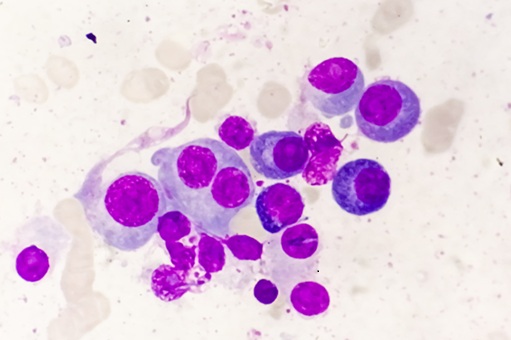
Mass Spectrometry-Based Monitoring Technique to Predict and Identify Early Myeloma Relapse
Myeloma, a type of cancer that affects the bone marrow, is currently incurable, though many patients can live for over 10 years after diagnosis. However, around 1 in 5 individuals with myeloma have a high-risk... Read moreMolecular Diagnostics
view channel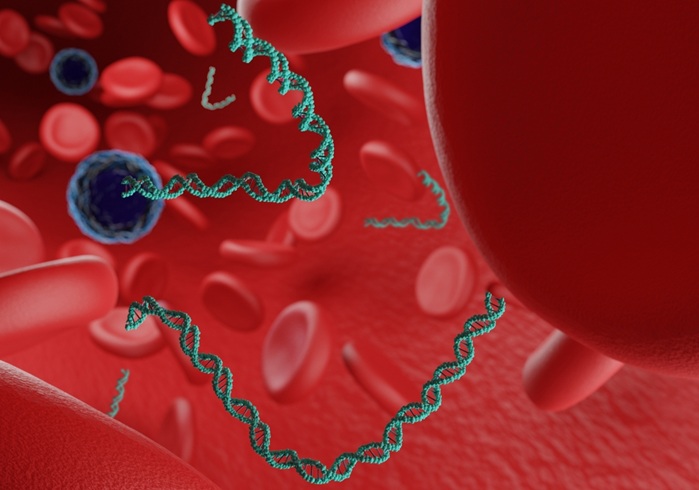
Liquid Biopsy Assay Detects Recurrence in CRC Patients Prior to Imaging
The detection of circulating tumor DNA (ctDNA) after treatment is a strong indicator of recurrence in colorectal cancer (CRC), but it often goes undetected due to the low traces of ctDNA present in the blood.... Read more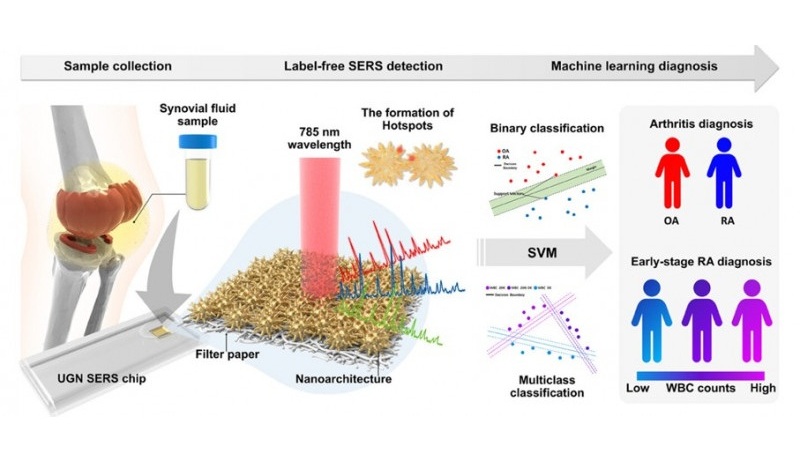
Ultra Fast Synovial Fluid Test Diagnoses Osteoarthritis and Rheumatoid Arthritis In 10 Minutes
Studies indicate that more than 50% of individuals aged 65 and older experience symptoms of osteoarthritis, while rheumatoid arthritis is a serious chronic condition affecting approximately 1 in 100 people... Read moreHematology
view channel
New Scoring System Predicts Risk of Developing Cancer from Common Blood Disorder
Clonal cytopenia of undetermined significance (CCUS) is a blood disorder commonly found in older adults, characterized by mutations in blood cells and a low blood count, but without any obvious cause or... Read more
Non-Invasive Prenatal Test for Fetal RhD Status Demonstrates 100% Accuracy
In the United States, approximately 15% of pregnant individuals are RhD-negative. However, in about 40% of these cases, the fetus is also RhD-negative, making the administration of RhoGAM unnecessary.... Read moreImmunology
view channel
Stem Cell Test Predicts Treatment Outcome for Patients with Platinum-Resistant Ovarian Cancer
Epithelial ovarian cancer frequently responds to chemotherapy initially, but eventually, the tumor develops resistance to the therapy, leading to regrowth. This resistance is partially due to the activation... Read more
Machine Learning-Enabled Blood Test Predicts Immunotherapy Response in Lymphoma Patients
Chimeric antigen receptor (CAR) T-cell therapy has emerged as one of the most promising recent developments in the treatment of blood cancers. However, over half of non-Hodgkin lymphoma (NHL) patients... Read moreMicrobiology
view channel
New Test Diagnoses Bacterial Meningitis Quickly and Accurately
Bacterial meningitis is a potentially fatal condition, with one in six patients dying and half of the survivors experiencing lasting symptoms. Therefore, rapid diagnosis and treatment are critical.... Read more
Handheld Device Delivers Low-Cost TB Results in Less Than One Hour
Tuberculosis (TB) remains the deadliest infectious disease globally, affecting an estimated 10 million people annually. In 2021, about 4.2 million TB cases went undiagnosed or unreported, mainly due to... Read more
New AI-Based Method Improves Diagnosis of Drug-Resistant Infections
Drug-resistant infections, particularly those caused by deadly bacteria like tuberculosis and staphylococcus, are rapidly emerging as a global health emergency. These infections are more difficult to treat,... Read more
Breakthrough Diagnostic Technology Identifies Bacterial Infections with Almost 100% Accuracy within Three Hours
Rapid and precise identification of pathogenic microbes in patient samples is essential for the effective treatment of acute infectious diseases, such as sepsis. The fluorescence in situ hybridization... Read morePathology
view channel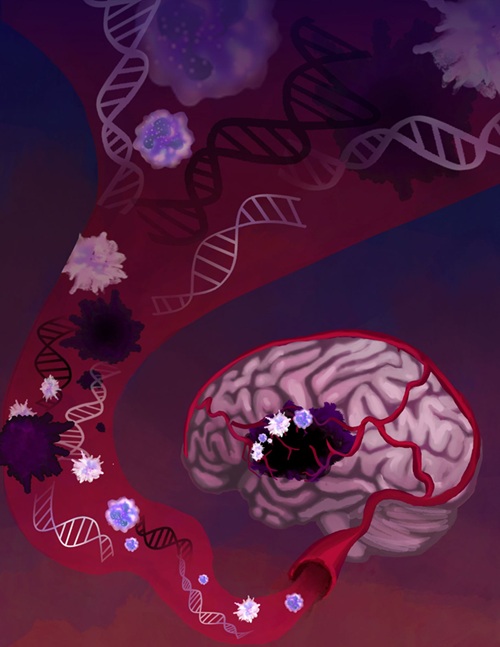
AI-Based Liquid Biopsy Approach to Revolutionize Brain Cancer Detection
Detecting brain cancers remains extremely challenging, with many patients only receiving a diagnosis at later stages after symptoms like headaches, seizures, or cognitive issues appear. Late-stage diagnoses... Read more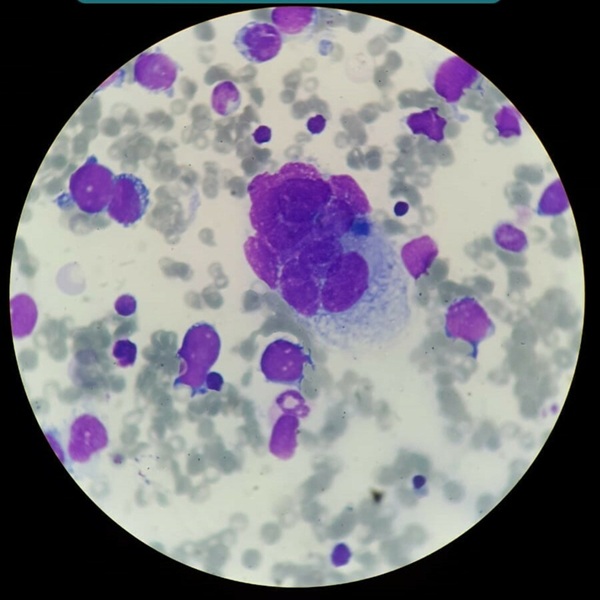
AI-Driven Analysis of Digital Pathology Images to Improve Pediatric Sarcoma Subtyping
Pediatric sarcomas are rare and diverse tumors that can develop in various types of soft tissue, such as muscle, tendons, fat, blood or lymphatic vessels, nerves, or the tissue surrounding joints.... Read more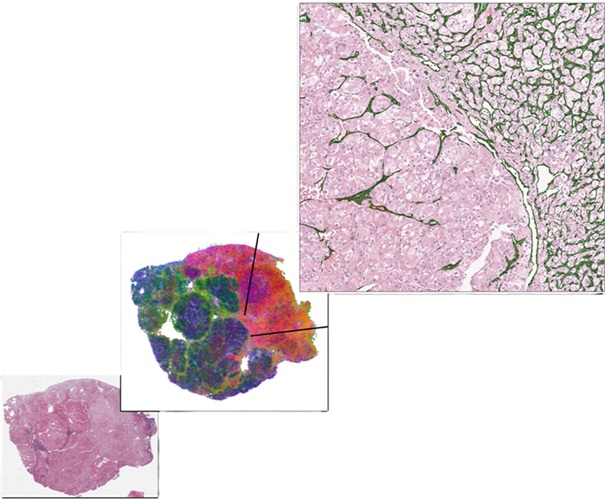
AI-Based Model Predicts Kidney Cancer Therapy Response
Each year, nearly 435,000 individuals are diagnosed with clear cell renal cell carcinoma (ccRCC), making it the most prevalent subtype of kidney cancer. When the disease spreads, anti-angiogenic therapies... Read more
Sensitive and Specific DUB Enzyme Assay Kits Require Minimal Setup Without Substrate Preparation
Ubiquitination and deubiquitination are two important physiological processes in the ubiquitin-proteasome system, responsible for protein degradation in cells. Deubiquitinating (DUB) enzymes contain around... Read moreTechnology
view channel
Light Signature Algorithm to Enable Faster and More Precise Medical Diagnoses
Every material or molecule interacts with light in a unique way, creating a distinct pattern, much like a fingerprint. Optical spectroscopy, which involves shining a laser on a material and observing how... Read more
Disposable Microchip Technology Could Selectively Detect HIV in Whole Blood Samples
As of the end of 2023, approximately 40 million people globally were living with HIV, and around 630,000 individuals died from AIDS-related illnesses that same year. Despite a substantial decline in deaths... Read more
Pain-On-A-Chip Microfluidic Device Determines Types of Chronic Pain from Blood Samples
Chronic pain is a widespread condition that remains difficult to manage, and existing clinical methods for its treatment rely largely on self-reporting, which can be subjective and especially problematic... Read more
Innovative, Label-Free Ratiometric Fluorosensor Enables More Sensitive Viral RNA Detection
Viruses present a major global health risk, as demonstrated by recent pandemics, making early detection and identification essential for preventing new outbreaks. While traditional detection methods are... Read moreIndustry
view channel
Cepheid and Oxford Nanopore Technologies Partner on Advancing Automated Sequencing-Based Solutions
Cepheid (Sunnyvale, CA, USA), a leading molecular diagnostics company, and Oxford Nanopore Technologies (Oxford, UK), the company behind a new generation of sequencing-based molecular analysis technologies,... Read more
Grifols and Tecan’s IBL Collaborate on Advanced Biomarker Panels
Grifols (Barcelona, Spain), one of the world’s leading producers of plasma-derived medicines and innovative diagnostic solutions, is expanding its offer in clinical diagnostics through a strategic partnership... Read more










